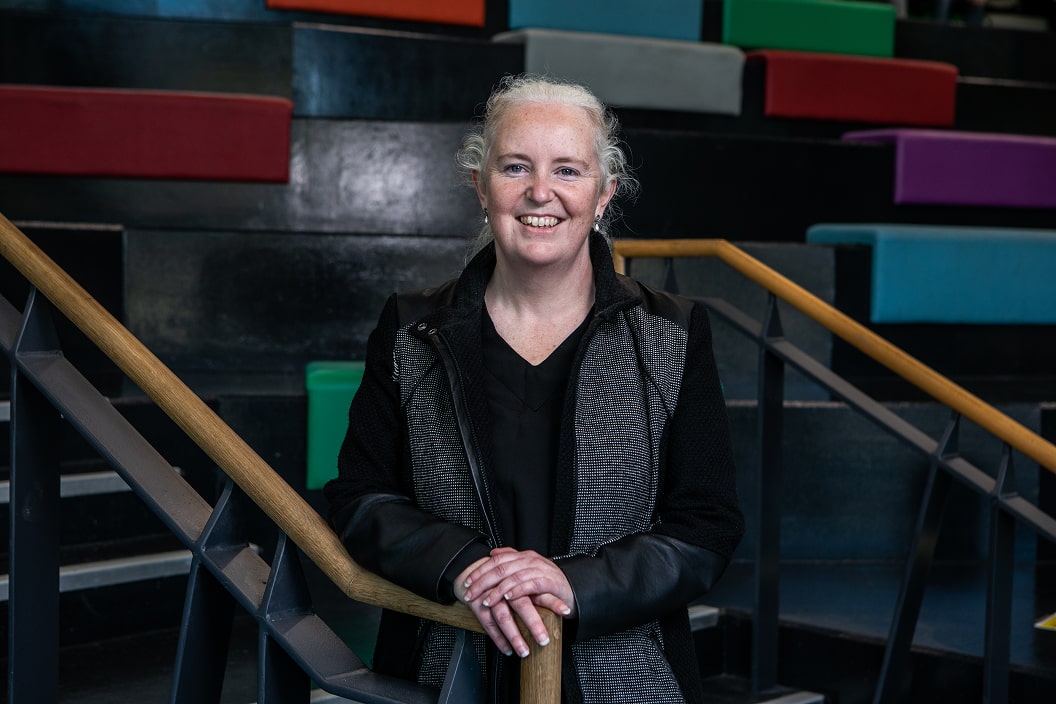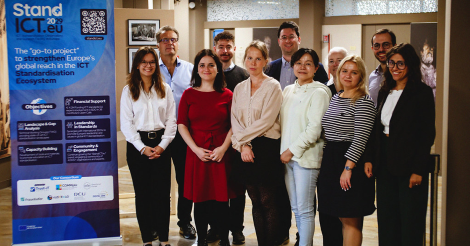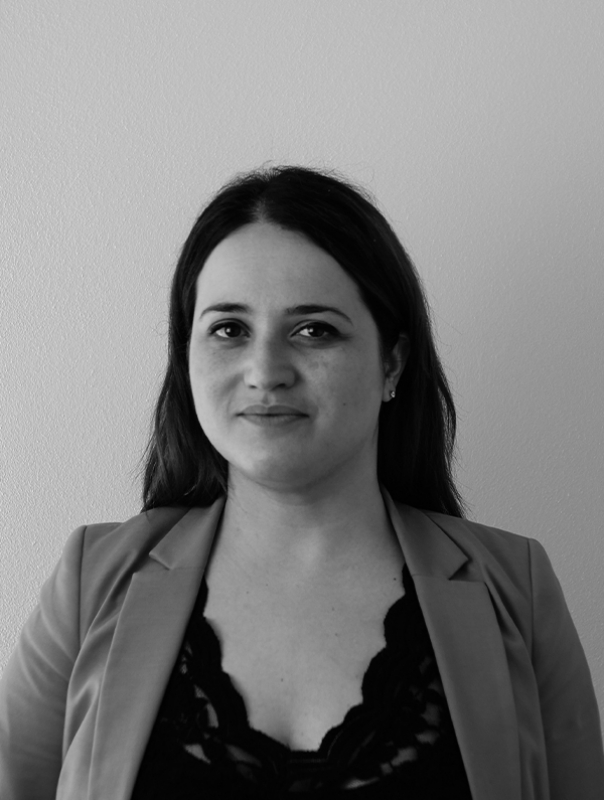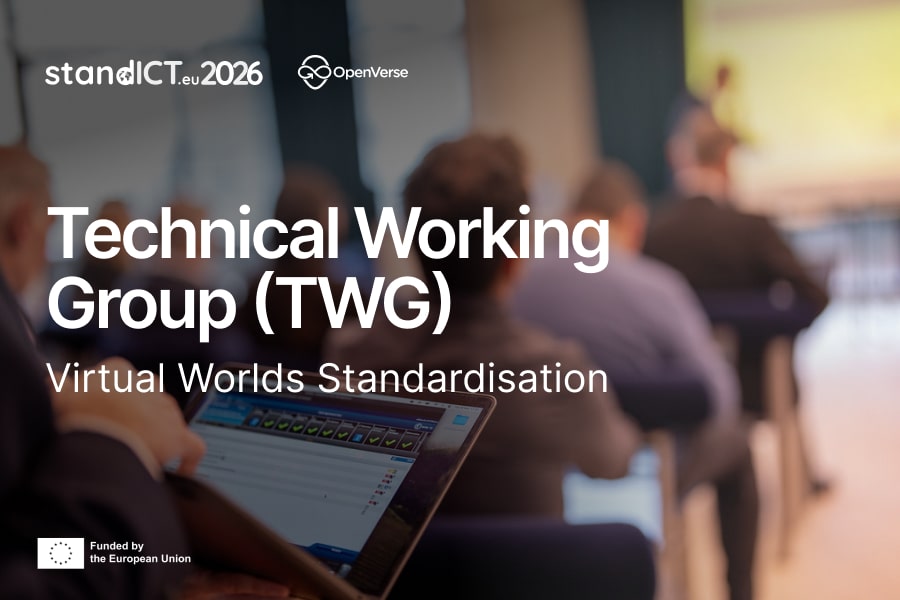Read time: 4 mins
Metaverse is a topic of great interest and there are many ideas on what Metaverse is and should be. The discussions and work revolving around the CitiVerse has begun more recently. These two sets of emerging technologies have a lot in common and sometimes the boundaries between them seem to be blurred, but they feature several specific demands and challenges. In this report on the Standardisation Landscape for CitiVerse, the StandICT.eu TWG CitiVerse considers CitiVerse as being a copy of the social physical real world.
In the publication, the term Metaverse is used for a virtual 3D world more freely designed and not being a copy of a specific physical area in the real world. The document navigates the intricacies of these two domains and provide some clarifications, although it by no means claims to cover all aspects of similarities or differences between the two. Both the CitiVerse and the Metaverse are at the beginning of a long journey, where ongoing work and collaboration in sharing thoughts and ideas will continue to form the future for both of them.
The Standardisation Landscape for CitiVerse divides the standards into their different verticals, as well as enablers. The report grouped these verticals and enablers in a taxonomy, in accordance with their domains. To get an overview of the standardisation landscape for CitiVerse, the members of the Technical Working Groups also looked at the CitiVerse from the point of view of different “building blocks” that are needed in order to construct CitiVerses or develop further standards regarding CitiVerse.
The result of their months-long effort is a remarkable report, now released by the StandICT.eu 2026 community. This report presents a curated collection of standards that are highly relevant to ICT domains and vertical sectors, considering their maturity and prominence.
This version of the Landscape Report focuses primarily on standards to consider when constructing CitiVerse or developing further standards for CitiVerse. Standards for various application areas, utilising the possibilities with CitiVerse, will eventually be taken into consideration in later versions of this document but are not included for now.
Regardless of how we choose to interpret the term CitiVerse and Metaverse, many of the standards and techniques used for Metaverse will be relevant and useful for CitiVerses as well. These include standards for visualisation and computer graphics and standards for extended reality (AR, VR, MR). Methods to create and manage user and computer-controlled avatars, as well as user interaction by wearables, haptics and other means, will probably be the same in these worlds too. Ethical, social, and legal considerations and concepts, such as privacy by design, moral design processes and humancentred design often overlap in both CitiVerses and Metaverses. Infrastructure capabilities such as AI, digital twins, and characteristics including accessibility, inclusion, trust and immersiveness need to be dealt with in both worlds. And so on. However, there are also many other aspects to take into consideration for CitiVerse that are not needed for more freely designed Metaverse.
- Antonio Kung – CEO at Trialog & Chair of EUOS CitiVerse TWG
- Joel Myers – Chair of the IEEE Smart Cities Future Summit & Vice Chair of EUOS CitiVerse TWG
- Torbjörn Lahrin – Project leader & main editor - Reference Architecture for IoT in ISO/IEC. Convenor of expert group for Smart Cities in JTC1/SC41
There is a need to keep CitiVerse in synchronisation with the real world, gathering all data required for CitiVerse to be a full and trustworthy digital copy of the real world, and keeping that data up to date.
In parallel, StandICT.eu 2026 will provide € 2,925,000 to fund European ICT experts through a series of (9) Open Calls to participate in international Standardisation Developing Organisations' working groups across the wide-range of topics identified in the EC Rolling Plan for ICT Standardisation.
The Third Open Call for applicants closes on 9th January 2024, 17:00 CET.



